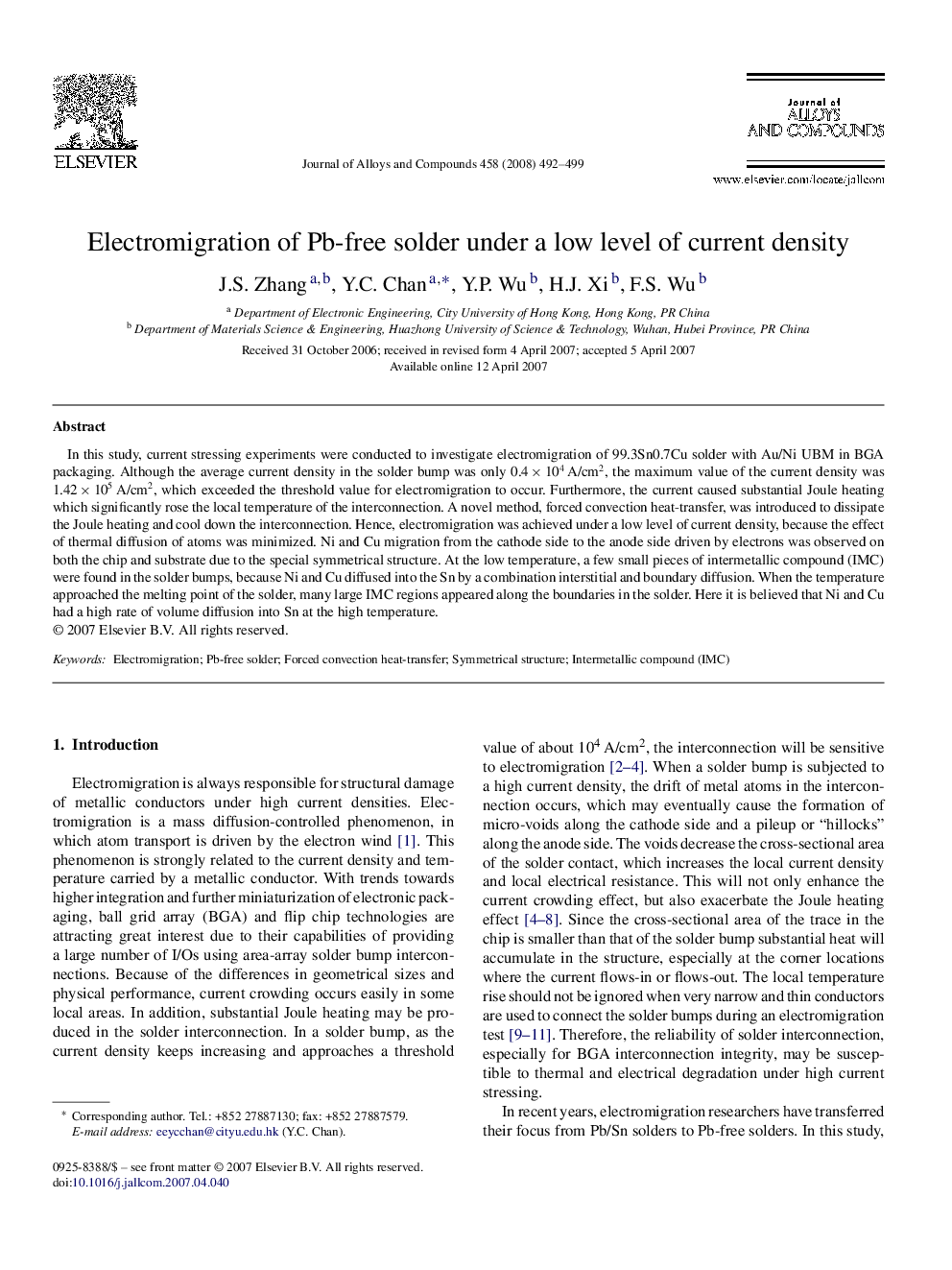| Article ID | Journal | Published Year | Pages | File Type |
|---|---|---|---|---|
| 1624450 | Journal of Alloys and Compounds | 2008 | 8 Pages |
In this study, current stressing experiments were conducted to investigate electromigration of 99.3Sn0.7Cu solder with Au/Ni UBM in BGA packaging. Although the average current density in the solder bump was only 0.4 × 104 A/cm2, the maximum value of the current density was 1.42 × 105 A/cm2, which exceeded the threshold value for electromigration to occur. Furthermore, the current caused substantial Joule heating which significantly rose the local temperature of the interconnection. A novel method, forced convection heat-transfer, was introduced to dissipate the Joule heating and cool down the interconnection. Hence, electromigration was achieved under a low level of current density, because the effect of thermal diffusion of atoms was minimized. Ni and Cu migration from the cathode side to the anode side driven by electrons was observed on both the chip and substrate due to the special symmetrical structure. At the low temperature, a few small pieces of intermetallic compound (IMC) were found in the solder bumps, because Ni and Cu diffused into the Sn by a combination interstitial and boundary diffusion. When the temperature approached the melting point of the solder, many large IMC regions appeared along the boundaries in the solder. Here it is believed that Ni and Cu had a high rate of volume diffusion into Sn at the high temperature.
